
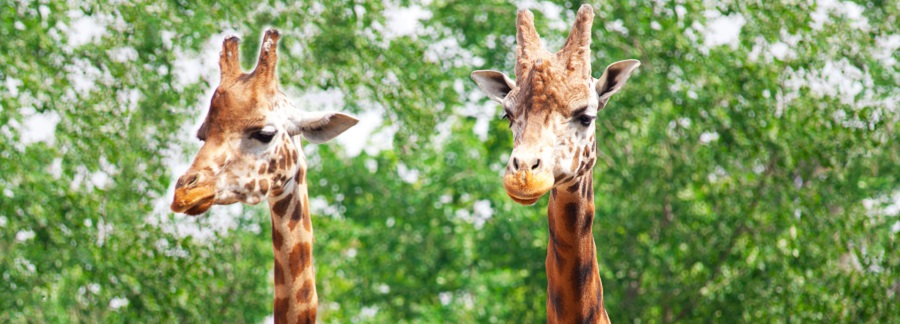
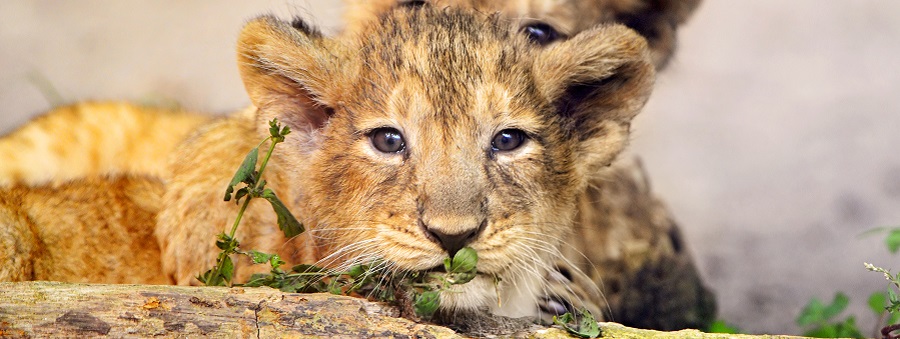
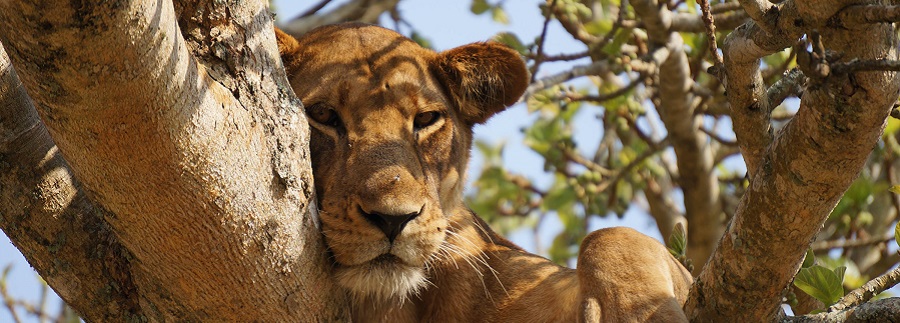
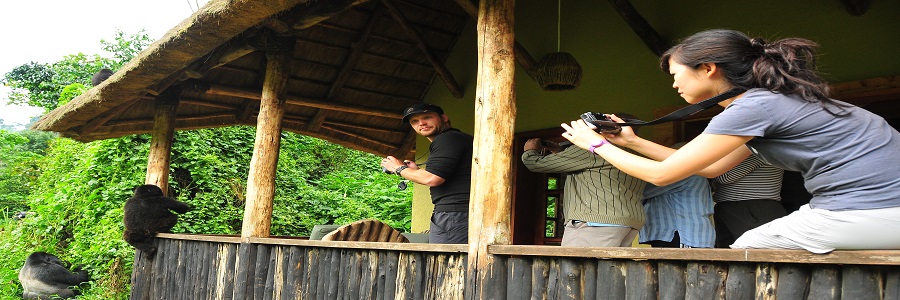

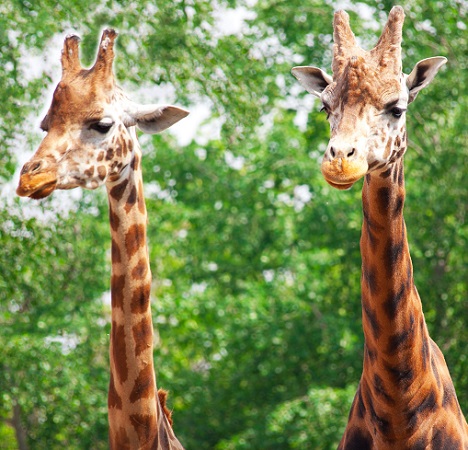
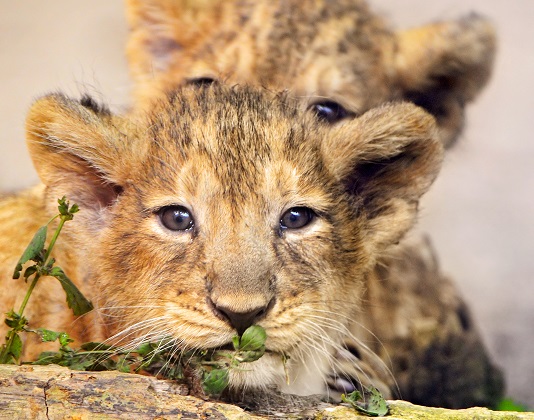
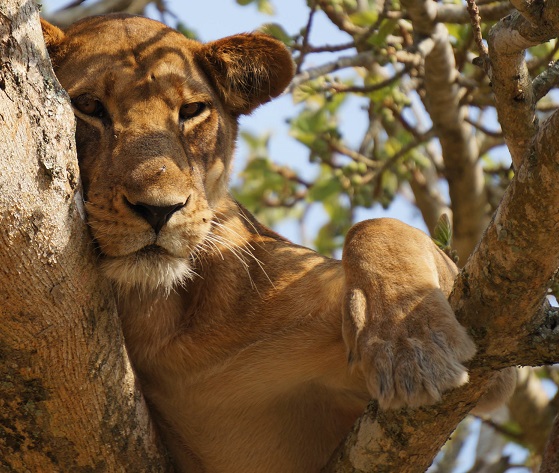
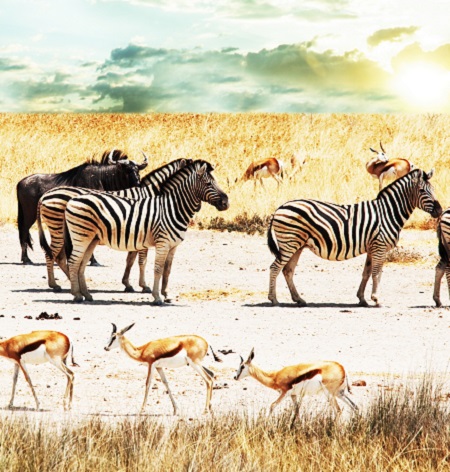
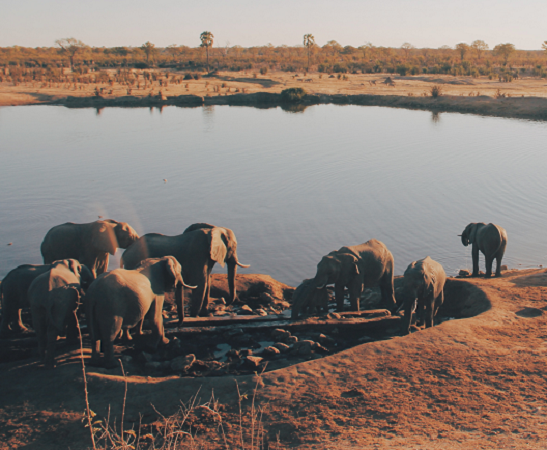
Option eins
Unser 3-tägiger Northern Circuit ist ein unvergesslicher Genuss der reichhaltigen Tierwelt und der atemberaubenden Umgebung Nordtansanias. Der Ngorongoro-Krater, der auf Afrikas Rasen von Eden genannt wird, beherbergt eine Fülle von Wildtieren, darunter das eher seltene Spitzmaulnashorn und seine Meilen, die für maximale Sportbeobachtungen bekannt sind. Die Erkundung der riesigen Savannenebenen im landesweiten Park von Tarangire und ruhige Sportfahrten entlang des flachen Wassers des Lake Manyara werden Sie verzaubern und revitalisieren.
Wir können in den frühen Morgenstunden von Arusha abfahren und zum Tarangire-Land, einem weiten Park, drängen, wo riesige Termitenhügel und historisches Affenbrotbaum-Holz auf uns warten. Dieser Park ist berühmt für seine große Elefantenpopulation, ihre malerische Umgebung und ihr vielfältiges Geflügelleben. Tarangire hat eine faszinierende Tierwelt, die Elefanten, Löwen, Giraffen, Warzenschweine, Strauße, Impalas, Geparden, Mungos, Büffel und Paviane umfasst. Während unsere Wildtruppe zum Stillstand kommt, können wir zum Lake Manyara fahren, wo Sie Abendessen und Übernachtung erhalten.
Damit wir rechtzeitig am Ngorongoro-Krater ankommen, können wir rechtzeitig in den Tag starten – frühmorgendliche Erholungsfahrten bieten Ihnen eine hochwertige Möglichkeit, Flora und Fauna zu identifizieren. Bei einem appetitlichen Picknick-Mittagessen im Krater können wir eine herrliche Wildkraft erleben. Die verbesserte Form ermutigt die Tiere, sich im Krater niederzulassen, was bedeutet, dass Sie eines Tages jedes Mitglied der riesigen Fünf wiedererkennen können. Die Big 5 neigen dazu, die Savanne zu dominieren und umfassen Büffel, Löwen, Elefanten, Nashörner und Leoparden. Der Ngorongoro-Krater entwickelte seine Struktur vor fast 3 Millionen Jahren, als ein riesiger Vulkan ausbrach, was ihn zur größten nicht überfluteten, ungebrochenen Caldera der Welt machte. Sie könnten auch davon ausgehen, auf Zebras, Nilpferde, Gnus und Hyänen zu stoßen. Sie finden die Flamingos, die sich anmutig über den Soda-See räkeln, und die Geier korrodieren normalerweise die weggeworfene Beute eines Raubtiers. Verschiedene Vögel umfassen Störche und Enten. Ihr Handbuch steht möglicherweise in engem Kontakt mit den alternativen Safari-Fahrern und sein erstaunliches Potenzial, versteckte Tiere zu vertonen, wird Ihnen einen erlebnisreichen Tag garantieren. Wir können zu Abend essen und die Nacht verbringen Lake Manyara
Am Morgen können wir zum Lake Manyara aufbrechen, wo wir den Tag verbringen und ein köstliches Picknick-Mittagessen genießen können. Der Park liegt am Fuße der rostigen goldenen extrem guten Rift Valley Böschung und die malerische Landschaft ist atemberaubend atemberaubend. Aufgrund der großen Vielfalt der Lebensräume ist eine Fülle von Arten im Park lebensfähig. Der Park-Rekord umfasst über 380 Vogelarten, von denen einige möglicherweise Zugvögel sind, was ihn zum idealen Ort für Hühnerbeobachter macht. Tausende von rosafarbenen Flamingos bevölkern den Rand des Sees; verschiedene große Wasservögel umfassen Pelikane, Störche und Kormorane. Die natürliche Welt, von der Sie annehmen können, dass sie aussieht, sind Büffel, Elefanten, Giraffen, Impalas und die wilden Flusspferde, die das Wasser bewohnen. Unsere Fahrt wird am späten Nachmittag zum Halt kommen. Wir können weiter nach Arusha proceed
ÜBER UNSERE SAFARIFAHRZEUGE

Option Zwei
Diese dreitägige Tour zum Tarangire-Nationalpark, zum Lake Manyara und zum Ngorongoro-Krater in Tansania bietet in kurzer Zeit eine Reihe bemerkenswerter Erlebnisse. Die Safari-Stippvisite lässt Sie eines der sieben Naturwunder Afrikas erkunden - den Ngorongoro-Krater und den Tarangire-Nationalpark, der eine Vielzahl von Pflanzen- und Tierarten bietet. Tarangire ist bekannt für seine endlosen Savannenebenen und seine riesigen Elefantenherden. Sie werden den berüchtigten Big Five vorgestellt und bestaunen die weite Landschaft des Kraters in Ngorongoro.
Wir werden Sie früh im Morgengrauen abholen und zum betörenden und oft übersehenen Arusha Nationalpark aufbrechen. Arusha ist ein Juwel Tansanias, mit einer Vielfalt an Pflanzen- und Tierwelt, die Sie in Atem halten lässt. Sie erkunden die Ufer des ruhigen Momella-Sees, der in seinem stillen Wasser die Farben des Himmels widerspiegelt, und Sie werden die Lebendigkeit des gebräunten Busches erleben, in dem sich Büffel, Wasserböcke, Giraffen, Warzenschweine, Zebras und Gazellen des Ngurduto-Kraters tummeln. Diese sind das ganze Jahr über ansässig, so dass Sie überall ein vielfältiges Tier sehen werden. Die schwer fassbaren Leoparden und Elefanten sind in Arusha eher scheu, aber es besteht auch eine gute Chance, sie zu entdecken. Sie haben auch die Möglichkeit, sich zu Fuß auf einen faszinierenden Spaziergang zu begeben, der ein ganz anderes Gefühl ist und den pulsierenden Puls Afrikas durch die Sohlen Ihrer Schuhe spüren kann. In einem langsameren Tempo können Sie Afrika tatsächlich verstehen. Sie werden die Flora und Fauna hautnah erleben, aber Sie bleiben in Sicherheit, begleitet von einem bewaffneten Ranger, der Sie durch den üppigen Wald zu den klaren Quellen eines glitzernden Wasserfalls führt. Die Ranger des Arusha-Nationalparks sind äußerst anerkennend, und bei Ihrem Spaziergang erfahren Sie viel über die Artenvielfalt des Parks – und sofort werden Sie einen Stamm schwarz-weißer Stummelaffen entdecken, der im Park für seine Akrobatik berühmt ist. Sie werden dann zurück nach Arusha sein
Hauptunterkunft
Unterkünfte: Es hängt von Ihrer Auswahl ab Budget-, Mittelklasse- und Luxushotel.
Mahlzeiten: Wasser ist bei allen Mahlzeiten inbegriffen (andere Getränke sind nicht inbegriffen)
Day 2: Tag 2: Arusha zum Tarangire Nationalpark NationalArusha to Tarangire National Park
Wir werden im Morgengrauen zum Tarangire-Nationalpark aufbrechen. In Tarangire angekommen, werden wir die gigantischen Termitenhügel und die alten Affenbrotbäume erkunden. Dieser Park ist bekannt für seine Vielfalt an Vogelarten und seine große Elefantenpopulation. Es gibt regelmäßige Sichtungen von unerbittlichen Löwen, Giraffen, Warzenschweinen, Straußen, Impalas, Geparden, Mungos, Büffeln und schelmischen Pavianen. Nachdem wir die Tierwelt in Tarangire beobachtet haben, setzen wir unsere Reise zu unserem nächsten Highlight, dem Ngorongoro-Krater und in der Nähe des Lake Manyara, fort. Abendessen und Übernachtung.
Hauptunterkunft
Unterkünfte: Verlassen Sie sich auf Ihre Auswahl Budget-, Mittelklasse- und Luxushotel. Mahlzeiten: Wasser wird in allen Mahlzeiten kombiniert (andere Getränke sind nicht inbegriffen)
Nach dem Frühstück werden Sie von Arusha zum Lake Manyara gefahren. Der Lake Manyara National Park liegt am Fuße des Great Rift Valley-Steilhangs und bietet eine malerische, abwechslungsreiche Landschaft. Wir werden ein Picknick im schönen Park haben. Abwechslungsreiche Lebensräume, begleitet von Regenwäldern, dem Soda Lake und der Savanne unterstützen das sehr vielfältige Ökosystem. Mit über vierhundert Vogelarten, von denen einige Zugvögel sind, ist das Reservat eine Freude für Vogelbeobachter. Der Lake Manyara beherbergt die legendären baumkletternden Löwen sowie Büffel, Elefanten, Giraffen, Impalas und Flusspferde. Am späten Nachmittag werden wir wieder in Arusha sein.
ÜBER UNSERE SAFARIFAHRZEUGE

Option Drei
Diese 3-tägige Safari-Option ist eine großartige Möglichkeit, innerhalb kurzer Zeit einige der erstaunlichen Tierwelt Tansanias zu erleben. Diese kompakte Safari ist ideal für diejenigen, die einen engen Zeitplan haben oder einen Wochenendausflug suchen.
Ein Besuch der Nationalparks Tarangire und Lake Manyara sowie des Ngorongoro-Kraters bietet an diesen drei Tagen das beste Tierbeobachtungserlebnis.
Die Konzentration der Wildtiere in diesen drei Parks bietet großartige Möglichkeiten, innerhalb kurzer Zeit viele Wildtiere zu sehen.
Sie werden um 07:00 Uhr von Ihrem Hotel in Moshi/Arusha abgeholt und in den Tarangire-Nationalpark gebracht, um Ihr Wildbeobachtungserlebnis in diesem herrlichen Park zu beginnen, der für seine große Sammlung von Affenbrotbäumen, spektakulären großen Säugetierpopulationen und einer Vielzahl von Vogelarten, ganz zu schweigen von einer der größten Elefantenkonzentrationen des Landes.
Nach Ihrer Tour durch den Park werden Sie zu Ihrem Zeltlager gebracht, wo Sie die Nacht verbringen werden.
Mahlzeiten: Mittag- und Abendessen inklusive
Sie verlassen das Camp gegen 06:00 Uhr und begeben sich für Ihre letzte Pirschfahrt zum Ngorongoro-Krater. Der Krater ist nicht nur die größte ununterbrochene Caldera der Welt, sondern auch eines der neuen 7 Naturwunder Afrikas. Nach Ihrer morgendlichen Pirschfahrt machen Sie eine Pause, um Ihr Lunchpaket am Hippo Pool Picnic zu genießen.
Nach dem Mittagessen werden Sie zurück nach Mto wa Mbu gebracht, wo Sie im Camp oder in der Lodge übernachten, wo Sie zu Abend essen.
Sie verlassen das Camp gegen 5 Uhr morgens und fahren zum Lake Eyasi, um mit den Hadzabe Bushmen, einer der letzten Jäger-Sammler-Gesellschaften der Welt, auf die Jagd zu gehen. Nach der morgendlichen Jagd besuchen Sie den Stamm der Datoga, erfahrene Handwerker und Schmiede. Nach Ihrem erstaunlichen kulturellen Erlebnis werden Sie am Nachmittag über Kuriositätenläden zurück nach Moshi/Arusha/Flughafen gebracht, wo Sie einige Souvenirs mit nach Hause nehmen können.
ÜBER UNSERE SAFARIFAHRZEUGE

Option Vier
Eine kombinierte Safari zur Serengeti und zum Ngorongoro-Krater ermöglicht es Ihnen, die vielfältige Topografie zu sehen und Tierwelt, die Ostafrika bietet. Begeben Sie sich von Arusha aus durch die abenteuerlichen Straßen des ausgehöhlten Ngorongoro-Kraters in die Serengeti, während Sie unterwegs Tiere, Vögel und Reptilien sehen. Sie werden der Massai-Kultur nahe kommen, wenn Sie an einer ihrer Bomas vorbeikommen und Zeit haben, die Hütten probieren ihre Kleider und erleben die Kultur.
Bei dieser berühmten Safari entdecken Sie zwei der 7 Naturwunder Afrikas. Beobachten Sie die atemberaubende Wanderung der Gnus in der Serengeti und entdecken Sie eines der seltenen Nashörner im Ngorongoro-Krater. Auf dieser Safari erleben Sie eine afrikanische Reise durch Ihre kühnsten Träume.
Wir verlassen Arusha am frühen Morgen und fahren zum Serengeti Country Wide Park. Wir werden auf einer Straße in der Nähe des Randes des Ngorongoro-Kraters zur Serengeti fahren und dabei Tierbeobachtungen berücksichtigen. Die goldene Savanne und die endlosen Ebenen voller Zebras, Gnus und Giraffen machen es leicht zu erkennen, warum die Serengeti eines der sieben Naturwunder Afrikas ist. An diesem Tag können wir ein Picknick auf der Naabai kopje (einem kleinen, felsigen Hügel in einer gewöhnlich flachen Umgebung) genießen, bei dem Sie die berühmten lilaköpfigen Eidechsen der Serengeti beobachten können. Nach dem Mittagessen geht es zusätzlich in die Ebene für einen gemächlichen Erholungsdruck. Die Nacht verbringen Sie in der Serengeti.
Wir können unseren Tag mit einer frühmorgendlichen Erholungsfahrt in der kritischen Serengeti beginnen. Die Savanne ist eine aktive Landschaft und die Luft wird von den Melodien der Vögel durchflutet, da das regenerierte Tageslicht beginnt, die gesamte Landschaft zu erhellen. Ihr Handbuch wird einen Blick auf die Abdrücke am Boden werfen, um Raubtiere zu verfolgen. Wir fahren zum Ngorongoro-Schutzgebiet. Sie werden mit Abendessen und Übernachtung versorgt
Nach einem frühmorgendlichen Frühstück können wir zum Ngorongoro-Krater eilen, da dies bei weitem die beste Zeit ist, um Tiere zu beobachten. An diesem Tag können wir einen Erholungsdruck rund um den Krater genießen und für ein Picknick an einem kleinen See im Park einkehren. Der See ist die Heimat vieler Flusspferde und Zugvögel, so dass die Gäste sicher gehen werden! Aufgrund des im Krater gebildeten tierischen Asocitoins besteht eine übermäßige Möglichkeit, jedes Mitglied von The Giant 5 zu erkennen. Die Institution beherbergt eine Reihe der mächtigsten Tiere Afrikas – den wilden Löwen, den großen Elefanten, den heimlichen Leopard, das stürmende Nashorn und der mächtige Wasserbüffel. Der Ngorongoro-Krater ist eindeutig ein wunderbarer Ort. Wussten Sie, dass es sich vor Millionen von Jahren in geformt hat? Ein massiver Vulkan brach aus und ließ den Vulkan kollabieren, hinterließ jedoch einen wunderbar ungebrochenen Krater, bekannt als Caldera. Innerhalb des bemerkenswerten Kraters können Sie sich darauf verlassen, verspielte Zebras, schwerfällige Flusspferde, flinke Gnus und gackernde Hyänen zu sehen. In ähnlicher Weise gibt es Schwärme von schlanken Flamingos entlang des Soda-Sees, während hungrige Falken und Geier den Himmel umkreisen, um ihre anschließende Mahlzeit aus weggeworfenen Kadavern zu suchen. Schöne Störche, Ibis und Kraniche sind berühmte Wasservögel im Krater, ein Anblick, den man nicht übersehen sollte. Nach einem süßen Nachmittag voller Tierbeobachtungen können wir früher oder später unsere Reise nach Arusha beginnen.
ÜBER UNSERE SAFARIFAHRZEUGE
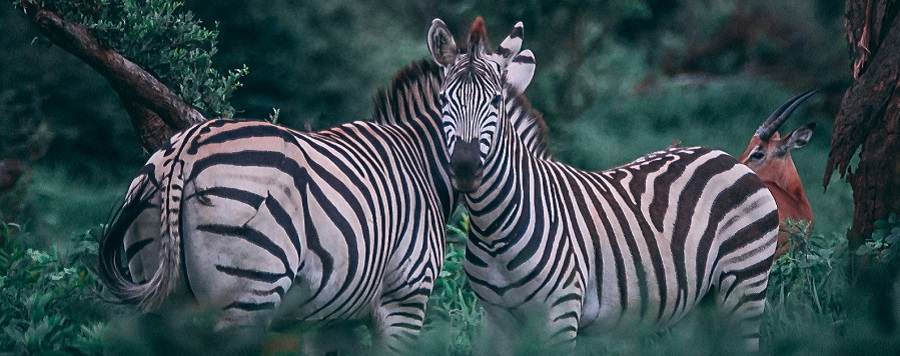
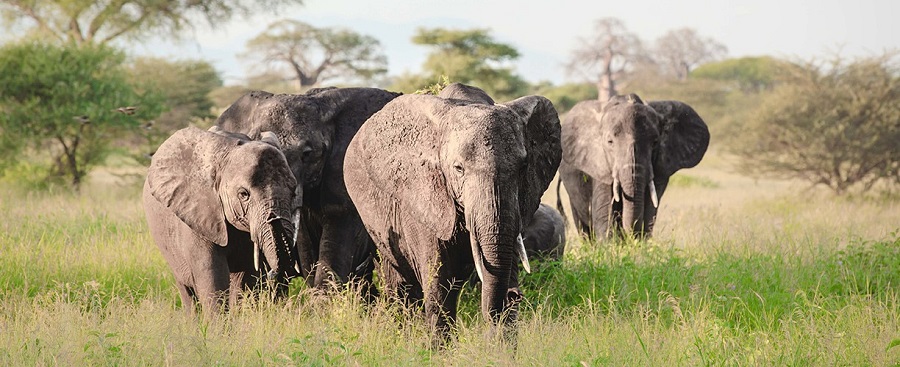
3 days safari Tarangire, Lake Manyara and Ngorongoro, 3 days safari Serengeti and Ngorongoro, 3 days Serengeti safari, 3 days safari Serengeti , 3 days Serengeti migration safari, 3 days private safari Tarangire, Lake Manyara and Ngorongoro,3 days private safari Serengeti and Ngorongoro, 3 days Serengeti private safari, 3 days private safari Serengeti , 3 days Serengeti migration private safari, 3 days sharing safari Tarangire, Lake Manyara and Ngorongoro, 3 days sharing safari Serengeti and Ngorongoro, 3 days Serengeti sharing safari, 3 days sharing safari Serengeti , 3 days Serengeti migration sharing safari, 3 days joining safari Tarangire, Lake Manyara and Ngorongoro, 3 days joining safari Serengeti and Ngorongoro, 3 days Serengeti joining safari, 3 days joining safari Serengeti , 3 days Serengeti migration joining safari, 3 days budget safari Tarangire, Lake Manyara and Ngorongoro,3 days budget safari Serengeti and Ngorongoro, 3 days Serengeti budget safari, 3 days budget safari Serengeti , 3 days Serengeti migration budget safari, 3 days luxury safari Tarangire, Lake Manyara and Ngorongoro, 3 days luxury safari Serengeti and Ngorongoro, 3 days Serengeti luxury safari, 3 days luxury safari Serengeti , 3 days Serengeti migration luxury safari, 3 days lodge safari Tarangire, Lake Manyara and Ngorongoro, 3 days lodge safari Serengeti and Ngorongoro, 3 days Serengeti lodge safari, 3 days lodge safari Serengeti , 3 days Serengeti migration lodge safari, 3 days camping safari Tarangire, Lake Manyara and Ngorongoro, 3 days camping safari Serengeti and Ngorongoro, 3 days Serengeti camping safari, 3 days camping safari Serengeti , 3 days Serengeti migration camping safari, , 3 days safari itinerary package cost price Tarangire, Lake Manyara and Ngorongoro, 3 days safari itinerary package cost price Serengeti and Ngorongoro, 3 days Serengeti safari itinerary package cost price , 3 days safari itinerary package cost price Serengeti , 3 days Serengeti migration safari itinerary package cost price , 3 days safari itinerary package cost price from arusha from moshi in arusha in moshi travel tour agency agencies operator operators company companies organizer organizers Tarangire, Lake Manyara and Ngorongoro, 3 days safari itinerary package cost price from arusha from moshi in arusha in moshi travel tour agency agencies operator operators company companies organizer organizers Serengeti and Ngorongoro, 3 days Serengeti safari itinerary package cost price from arusha from moshi in arusha in moshi travel tour agency agencies operator operators company companies organizer organizers, 3 days safari itinerary package cost price from arusha from moshi in arusha in moshi travel tour agency agencies operator operators company companies organizer organizers Serengeti , 3 days Serengeti migration safari itinerary package cost price from arusha from moshi in arusha in moshi travel tour agency agencies operator operators company companies organizer organizers.
In the shadow o the escarpment of the Great Rift Valley, Lake Manyara is best used as a soft introduction to a East Africa safari. While the scenic beauty of this park certainly makes it worth a visit, the game viewing here pales into insignificance when compared with that on offer in Tarangire, the Ngorongoro and the Serengeti. Famous for its tree-climbing lions, flamingos, breath-taking scenery and the soda-ash lake in the centre, Manyara merits a day trip but not much longer.
Lake Manyara is a lovely scenic park on the road from Arusha to the Ngorongoro Crater, famous for its tree climbing lions, great birdlife, good elephants and baboons. The lake itself takes up much of the park, leaving a strip of land running along its shores where game concentrates.
Often visited for an afternoon game drive on the way to Ngorongoro, it would be a shame to miss out Manyara if you're driving straight past it - but it's really not up there with the heavyweight big boys in terms of game viewing. However, if you're going on to Ngorongoro and Serengeti, you'll see plenty of game there anyway...
Lake Manyara National Park: The Wildlife
The concentrations of game here is not nearly as high as in surrounding parks, but there are a number of unique species that give reason enough to safari here. The park's main attraction are Lake Manyara's famous tree climbing lions - why these lions habitually climb trees is still up for debate, but viewing a pride relaxing in an acacia tree is a remarkable sight! The park is also famous for its elephant and huge number of baboons, and its varied landscape supports an impressive range of other game including wildebeest, buffalo, hippo, flamingo, zebra, warthog, waterbuck, giraffe, dik-dik and impala. The birding here is also very good, especially raptors.
How many flamingos are there on Lake Manyara?
Depending on when you go, flamingos flock on Lake Manyara in their thousands. It is impossible to predict as they flit between here and other East African lakes. You could see one, or you could see 10,000... It really is down to the luck of the draw.
Lake Manyara - When to go
According to the regional migration pattern, Manyara's official peak season is from July to October. However for such a small park this should not be a deciding factor; if you are in the area and have time, Lake Manyara is consistently good as a soft game viewing park at any time of the year. Lake Manyara is a great way to start your Tanzania safari and we recommend visiting on your Northern Tanzania circuit whilst on your way to the Ngorongoro Crater.
Lake Manyara - The activities
The main activity for visitor is day time game driving, although the park has recently started to offer night safaris and the camps deep inside the park offer short walks. Staying in the Rift Valley outside the park however does open up a wealth of possibilities, with activities such as walking, village trips, hiking and mountain biking available at some lodges.
Lake Manyara accommodation - Lodges and hotels near Lake Manyara
The most famous lodge at Manyara is &Beyond's luxurious Lake Manyara Tree Lodge, which offers the only accommodation actually inside the park.
Nestled on the top of the Rift Valley with superb views looking down into the park are the much more affordable Kirurumu Tented Camp and Lake Manyara Serena Lodge.
We also use lodges in the nearby Karatu area, the best of which are Plantation Lodge and Gibbs Farm, both allowing equally convenient access to Lake Manyara and the Ngorongoro Crater.
Lake Manyara - Further Reading
While we try and make our website as comprehensive as possible, if you would like some more background information, have a read through the Cadogan Guide to Tanzania and Zanzibar - Lake Manyara Chapter, written by one of our director’s Annabel. The most recent edition was published in 2005 so some of it might be slightly dated but generally it’s as comprehensive as they come. Also see our post about Tanzania's first treetop walkway which can be found withing Lake Manyara Park..
In the shadow o the escarpment of the Great Rift Valley, Lake Manyara is best used as a soft introduction to a East Africa safari. While the scenic beauty of this park certainly makes it worth a visit, the game viewing here pales into insignificance when compared with that on offer in Tarangire, the Ngorongoro and the Serengeti. Famous for its tree-climbing lions, flamingos, breath-taking scenery and the soda-ash lake in the centre, Manyara merits a day trip but not much longer.
Lake Manyara is a lovely scenic park on the road from Arusha to the Ngorongoro Crater, famous for its tree climbing lions, great birdlife, good elephants and baboons. The lake itself takes up much of the park, leaving a strip of land running along its shores where game concentrates.
Often visited for an afternoon game drive on the way to Ngorongoro, it would be a shame to miss out Manyara if you're driving straight past it - but it's really not up there with the heavyweight big boys in terms of game viewing. However, if you're going on to Ngorongoro and Serengeti, you'll see plenty of game there anyway...
Lake Manyara National Park: The Wildlife
The concentrations of game here is not nearly as high as in surrounding parks, but there are a number of unique species that give reason enough to safari here. The park's main attraction are Lake Manyara's famous tree climbing lions - why these lions habitually climb trees is still up for debate, but viewing a pride relaxing in an acacia tree is a remarkable sight! The park is also famous for its elephant and huge number of baboons, and its varied landscape supports an impressive range of other game including wildebeest, buffalo, hippo, flamingo, zebra, warthog, waterbuck, giraffe, dik-dik and impala. The birding here is also very good, especially raptors.
How many flamingos are there on Lake Manyara?
Depending on when you go, flamingos flock on Lake Manyara in their thousands. It is impossible to predict as they flit between here and other East African lakes. You could see one, or you could see 10,000... It really is down to the luck of the draw.
Lake Manyara - When to go
According to the regional migration pattern, Manyara's official peak season is from July to October. However for such a small park this should not be a deciding factor; if you are in the area and have time, Lake Manyara is consistently good as a soft game viewing park at any time of the year. Lake Manyara is a great way to start your Tanzania safari and we recommend visiting on your Northern Tanzania circuit whilst on your way to the Ngorongoro Crater.
Lake Manyara - The activities
The main activity for visitor is day time game driving, although the park has recently started to offer night safaris and the camps deep inside the park offer short walks. Staying in the Rift Valley outside the park however does open up a wealth of possibilities, with activities such as walking, village trips, hiking and mountain biking available at some lodges.
Lake Manyara accommodation - Lodges and hotels near Lake Manyara
The most famous lodge at Manyara is &Beyond's luxurious Lake Manyara Tree Lodge, which offers the only accommodation actually inside the park.
Nestled on the top of the Rift Valley with superb views looking down into the park are the much more affordable Kirurumu Tented Camp and Lake Manyara Serena Lodge.
We also use lodges in the nearby Karatu area, the best of which are Plantation Lodge and Gibbs Farm, both allowing equally convenient access to Lake Manyara and the Ngorongoro Crater.
We don't just know Tanzania!
For more information on Tanzania, the best thing to do is to give us a ring for an impartial chat. Although we love Tanzania, we also love the rest of Africa too and have experts in all the main safari countries. If you are undecided as to where to visit, please do just drop us an email or give us a call!
The Northern Circuit Encounter
Our three day Northern Circuit Encounter is a memorable experience of Northern Tanzania’s abundance of wildlife and spectacular scenery. Dubbed ‘Africa’s Garden of Eden’, The Ngorongoro Crater hosts an abundance of wildlife including the exceptionally rare black rhino and it is renowned for maximum game spotting. Exploring the vast plains of savannah in Tarangire National Park and tranquil game drives along the shallow waters of Lake Manyara will leave you feeling enchanted and revitalised.
TOUR ITINERARY
Day One: Moshi/Arusha/airport to Tarangire National Park
We will depart from Moshi/Arusha/airport in the early hours of the day and drive to Tarangire National Park where colossal termite mounds and ancient baobab trees await us. This park is renowned for their immense elephant population, their picturesque scenery and diverse bird life. Tarangire has an enticing wildlife that includes elephants, lions, giraffe, warthogs, ostriches, impalas, cheetah, mongoose, buffaloes and baboons. When our game drive comes to an end we will proceed to the Ngorongoro Crater rim campsite where we will witness the glorious sunset.
Day Two: Ngorongoro Crater
We will have a timely start to the day to ensure that we arrive at the Ngorongoro Crater promptly – early morning game drives provide you with an excellent opportunity to spot wildlife. We will enjoy a wonderful game drive with an appetising picnic lunch inside the crater. The elevated structure encourages the animals to settle inside the crater which means you are capable of spotting every member of ‘The Big 5’ in one day. The big five tend to dominate the savannah and consist of buffalo, lions, elephants, rhinos and leopards. The Ngorongoro Crater developed its structure nearly three million years ago when a colossal volcano erupted, making it the largest un-flooded, unbroken caldera in the world. You can also expect to encounter zebra, hippo, wildebeest and hyenas. You will find the flamingos gracefully lounging around the Soda Lake and the vultures are always corroding the discarded prey of a predator. Other birds include storks and geese. Your guide will be in close contact with the other safari drivers and his impressive ability to track down hidden animals will assure that you have an eventful day. We will have dinner and spend the night at the Fanaka Campsite. Comprehensive camping facilities are on offer.
Day Three: Lake Manyara to Moshi
In the morning we will depart to Lake Manyara where we will spend the day and enjoy a delectable picnic lunch. The park is nestled at the base of the rusty gold Great Rift Valley escarpment and the scenic landscape is breathtakingly magnificent. An abundance of species are able to reside in the park due to the wide range of habitats. The park record consists of over 380 species of birds, some of which are migratory, making it the ideal location for bird watchers. Thousands of pink-hued flamingos occupy the margin of the lake, other large water birds include pelicans, storks and cormorants. The wildlife you can expect to see are buffalo, elephants, giraffe, impalas and the ferocious hippos that inhabit the water. Our trip will come to an end in the late afternoon. We will proceed to Moshi but transportation to the airport can be arranged on request.
This 3-day lodge safari offers you the chance to see a wide variety of wildlife amongst some of the most diversified landscapes. Not only will you visit the Tarangire and Lake Manyara National Park but also the Ngorongoro Crater, a UNESCO World Heritage Site. You will see huge herds of elephants, in season flocks of flamingos and troops of baboons.
We have arranged packages taking you to Tanzania covering the most popular packs such as Serengeti, Ngorongoro, Lake Manyara, Tarangire National Park provided by the best tour operators in Tanzania.
Serengeti National Park is a famous national park found in northwestern Tanzania, it’s one of the oldest national park in this country. The park is famous for the annual migration of over 250000 zebras, crocodiles, honey badger as well as 1.5 million white bearded wildebeest. Serengeti National Park was made a reserve in 1921 and was established in 1951. The park covers an area of over 14,750 square kilometers of savannah, riverine forest, grassland plains as well as woodlands. It has got many animal species including; 2500 lions, 1000 leopards, African Bush elephants, African buffalos, eastern black Rhinoceros, Thomson’s and grant’s gazelles, wildebeest, topis, water bucks, eland, striped hyenas, spotted hyenas, baboon, eastern African wild dog, impalas, as well as masai giraffes, the park has over 500 bird species including; vultures, love birds, martial eagles, crowned cranes, Marabou storks, Kori bastards, ostriches as well as the secretary bird.
Have breakfast at your lodge or hotel in Arusha, and after start your transfer to Serengeti National Park at 7:00am. It’s approximately 335 km from Arusha town. This is also known as a world heritage site and it’s the oldest of the national parks. It’s mainly known for the annual wildebeests, 200000 zebras as well as 300,000 Thomson’s gazelle which migrate within the months of May, June, July, October, November and December. Upon your arrival at the park, you will check in at your lodge and proceed for a walking safari within the park.
Day 2: Have Full day game viewing in the park
Enjoy a game drive early in the morning to view all the nocturnal animals that are returning from hunting and the lions awaking in the dawn, again during the game drive, you will view many other animals on this Tanzania safari including; buffaloes, elephants, giraffes, topi, eland, Zebras, Kongoni, Lions, Solitary Leopards, Impalas, Hyenas, cheetahs, serval cats, wild dogs, lizards, the black Rhinoceros and many more. There are also many birds that will be spotted on a safari in Tanzania including the secretary birds, black eagles, Bizarre , Ostrich, Kori bastard, crowned crane, martial eagle, love birds, marabou Stork etc. Return to the lodge in the afternoon for lunch and relax for the evening.
Day 3: Transfer back to Arusha and Departure
Early in the morning, have your breakfast at the lodge and after start your transfer back to Arusha, having lunch on your arrival. Later, your guide will transfer you to the Airport for your departure flight.
Tanzania is a safari paradise with stunning scenery, abundant wildlife and diverse cultures. This tour will take you to Ngorongoro Crater where you can enjoy its blue-green vistas and unparalleled concentration of wildlife; Serengeti, a UNESCO world heritage site and home to various wildlife, including lions, cheetahs and at certain times of the year, the wildebeest migration.
This 3 days safari Tanzania starts and ends in Arusha town the base town for all Tanzania safari tours in the Northern Tanzania Safari circuit. The 3 days tour is a great package for all ages due to the short distances involved because all the 3 parks that you will visit are located not very far from one another.
Starting and ending in Arusha the 3 day Tanzania safari takes you to the Ngorongoro Crater (one of the two most famous wildlife parks in Tanzania) but also a visit to Tarangire National Park and the Lake Manyara National Park a small evergreen gem of its own kind.
Starting with Tarangire National Park you will visit this theater of the wild that is famous for its unusually huge herds of elephants and the gigantic baobab trees that dot the park. Accommodation will be in a nice tented camp in the vicinity of the park just outside the park boundary with great views over the plains across as well as the Lake Burunge in the far horizon, but you may also stay at a cheaper mid range lodge in the Karatu area where we can take you late in the afternoon after satisfactory game drives in the Tarangire.
3-Day Tanzania Safari from Arusha – Where to visit
You will then proceed with your 3 days Tanzania safari adventure with a visit to the Ngorongoro Crater which is world famous for extraordinary numbers of wildlife which can be spotted at very close range. Think of lions, elephants, leopards, black rhinos, buffaloes; all the big five can be spotted in this ‘Eden of Africa’ in one day with a little bit of luck! Accommodation on this day can in a lodge located directly at the Crater rim ( at extra cost) or at the nice mid-range lodge that we have included in this published tour in Karatu which is just a stone throw away from the Loduare Main Gate to the Ngorongoro Conservation Area.
Your third and last day of your 3 days safari in Tanzania from Arusha will be visiting the evergreen Lake Manyara National Park, of the legendary tree climbing lions among many other animals and birds that can be seen in this small park. The park is good place to see the hippos at the lake side but also you may be lucky to spot flamingos, and many other aquatic birds, with over 400 birds species having been recorded here.
Later in the afternoon you will be dropped back at your hotel in Arusha or you can be dropped ( at a small fee) at the Kilimanjaro International Airport if departing on this day. That marks the end of your amazing ‘taste of
Day 1
Tarangire National Park
Distance: 140km
Non – game viewing time : 2 – 3 hrs
After breakfast the tour departs. First stop is Arusha Town for any last minute purchases before we head off on safari. Afterwards we head towards the Tarangire National Park for a game drive with picnic lunch at the park. Tarangire is well known for its huge elephant population and baobab trees. It forms the centre of an annual migratory cycle that includes up to 3000 elephants, 25,000 wildebeest and 30,000 zebras. Dinner and overnight at Maramboi tented camp.
• MEALS: Lunch | Dinner | Bed | Breakfast
• Accomodation: Maramboi Tented Camp
Day 2
Lake Manyara National Park
Distance: 50km
Non – game viewing time : 2 hrs
After breakfast the tour departs. First stop is Arusha Town for any last minute purchases before we head off on safari. Afterwards we head to Lake Manyara. Lake Manyara National Park offers breathtaking views and a large variety of habitats. Acacia woodlands, water forests, baobab strewn cliffs, algae-streaked hot springs, swamps and the lake itself. And thanks to this the small Park is able to support a large number of animal species and incredible bird life. Manyara has the largest concentration of baboons anywhere in the world and the lions here are also renowned for their tree climbing. Dinner and overnight at Ngorongoro Farm house
• MEALS: Lunch | Dinner | Bed | Breakfast
• Accomodation: Ngorongoro farm house
Day 3
Ngorongoro Crater – Arusha – Airport
Distance: 210km
Non – game viewing time : 3 – 4 hrs
After an early breakfast, You will descend over 600 meters into the crater to view wildlife. Supported by a year round water supply and fodder, the Ngorongoro conservation Area supports avast variety of animals, which include herds of wildebeest, zebra, buffalo, eland, warthog, hippo and giant African elephants. Another big draw card to this picturesque national park, is it’s dense population of predators, which include lions, hyenas, jackals, cheetahs and the ever-elusive leopard, which sometimes requires a trained eye to spot. We will visit Lake Magadi, a large but shallow alkaline lake in the southwestern corner, which is one of the main features of the crater. A large number of flamingos, hippos and other water birds can usually been seen here. Late afternoon transfer to Arusha For dinner and Overnight or airport drop off. ( Accommodation can be included upon request at extra cost )
Ngorongoro" redirects here. For the district, see Ngorongoro District.
Ngorongoro Conservation Area
Location Arusha Region, Tanzania
Coordinates 03°12′36″S 35°27′36″ECoordinates: 03°12′36″S 35°27′36″E
Area 8,292 km2 (3,202 sq mi)[1]
Established 1959
Visitors Over 500,000 per year[2]
Governing body Ngorongoro Conservation Area Authority
UNESCO World Heritage Site
Type Natural
Criteria (iv)(vii)(viii)(ix)(x)
Designated 1979 (3rd session)
Reference no. 39
State Party Tanzania
Region Africa
Endangered 1984–1989
Inside the crater
The Ngorongoro Conservation Area (UK: /(ə)ŋˌɡɔːrəŋˈɡɔːroʊ/,[3]US: /ɛŋˌɡɔːroʊŋˈɡɔːroʊ, əŋˌɡoʊrɔːŋˈɡoʊroʊ/[4][5]) is a protected area and a World Heritage Site located 180 km (110 mi) west of Arusha in the Crater Highlands area of Tanzania. The area is named after Ngorongoro Crater, a large volcanic caldera within the area. The conservation area is administered by the Ngorongoro Conservation Area Authority, an arm of the Tanzanian government, and its boundaries follow the boundary of the Ngorongoro Division of the Arusha Region.
The 2009 Ngorongoro Wildlife Conservation Act placed new restrictions on human settlement and subsistence farming in the Crater, displacing Maasaipastoralists, most of whom had been relocated to Ngorongoro from their ancestral lands to the north when the British colonial government established Serengeti National Park in 1959
The main feature of the Ngorongoro Conservation Authority is the Ngorongoro Crater, the world's largest inactive, intact and unfilled volcanic caldera.[18] The crater, which formed when a large volcano exploded and collapsed on itself two to three million years ago, is 610 metres (2,000 feet) deep and its floor covers 260 square kilometres (100 square miles).[11][19] Estimates of the height of the original volcano range from 4,500 to 5,800 metres (14,800 to 19,000 feet) high.[19] The crater floor is 1,800 metres (5,900 feet) above sea level.[1] The crater was voted by Seven Natural Wonders[20] as one of the Seven Natural Wonders of Africa in Arusha, Tanzania, in February 2013.[21] The Ngorongoro volcano was active from about 2.45 to 2 million years ago.
The volcanic eruptions like that of Ngorongoro, which resulted in the formation of Ngorongoro Crater in Tanzania, were very common. Similar collapses occurred in the case of Olmoti and Empakaai, but they were much smaller in magnitude and impact.
Out of the two recent volcanoes to the northeast of the Empakaai caldera, Kerimasi and OlDoinyoLengai, DoinyoLengai is still active and had major eruptions in 2007 and 2008. Smaller ash eruptions and lava flows continue to slowly fill the current crater. Its name is Maasai for 'Mountain of God'.
Lake Magadi
The Munge Stream drains Olmoti Crater to the north, and is the main water source draining into the seasonal salt lake in the center of the crater. This lake is known by two names: Makat as the Maasai called it, meaning salt; and Magadi. The Lerai Stream drains the humid forests to the south of the Crater, and it feeds the Lerai Forest on the crater floor – when there is enough rain, the Lerai drains into Lake Magadi as well. Extraction of water by lodges and Ngorongoro Conservation Area headquarters reduces the amount of water entering Lerai by around 25%.
The other major water source in the crater is the Ngoitokitok Spring, near the eastern crater wall. There is a picnic site here open to tourists and a huge swamp fed by the spring, and the area is inhabited by hippopotamuses, elephants, lions and many others. Many other small springs can be found around the crater's floor, and these are important water supplies for the animals and local Maasai, especially during times of drought. Masai were previously permitted to graze their cattle within the crater, but as of 2015 were restricted from doing
Welcome to Ngorongoro Crater Lodge
Ngorongoro Crater Lodge has been called the game lodge at the top of the world. Between the natural riches of the Crater spread out at its feet and the incredible architecture, it’s easy to believe that you have entered a realm of pure fantasy.
Nearly three million years old, the ancient caldera shelters one of the most beautiful wildlife havens on earth. Endangered black rhino are protected within its rim, giant tusked elephant wander the forests, male lion stalk the grasslands and flamingo crowd the soda lakes.
Nowhere else on earth can you wake up among all the trappings of an elegant baroque châteaux that transports you into one of the most famous African landscapes. An eclectic blend of teak panelling, Victorian furnishings and whimsical African touches creates a sumptuous atmosphere that is as elegant and unique as the Crater itself. In this place of dramatic contrasts, anything is possible and the natural luxury of the beautiful setting ensures the dramatic interior of your suite blends perfectly with its stilted thatch architecture.
Divided into three camps, 30 suites with banana leaf ceilings and grass roofs provide an intimate and exclusive experience. Each camp has its own sitting and dining areas, with private butlers who provide warm, personal service. With ever-changing views as mists swirl over the huge wildlife cauldron below, the location is truly breathtaking. Guests can be forgiven for losing track of which era, or even continent, they are experiencing at this lodge. Everything is chosen to delight the imagination and enhance the spectacular views of the magnificent surroundings.
STEEPED IN ROMANCE
Watch and listen to the chant of Maasai warriors, overlooking the game-rich Crater as the sun goes down, or enjoy a wine tasting in the wine store. Personal butlers discretely cater for each guest’s every need, bringing tea in bed, stoking fireplaces and drawing bubble baths.
ACTIVE AND CULTURE BUFFS
This area is steeped in history, culture and diversity. Indulge in a feast at a private picnic spot on the Crater floor. Put on your hiking boots for three amazing hikes; spend a morning with the Hadzabe people; visit the cradle of mankind at Olduvai Gorge or indulge in a massage.
The jewel in Ngorongoro's crown is a deep, volcanic crater, the largest un flooded and unbroken caldera in the world. About 20kms across, 600 meters deep and 300 sq kms in area, the Ngorongoro Crater is a breathtaking natural wonder.
Ngorongoro Trail Map
The Ngorongoro Crater is one of Africa’s most famous sites and is said to have the highest density of wildlife in Africa. Sometimes described as an ‘eighth wonder of the world’, the Crater has achieved world renown, attracting an ever-increasing number of visitors each year. You are unlikely to escape other vehicles here, but you are guaranteed great wildlife viewing in a genuinely mind-blowing environment. There is nowhere else in Africa quite like Ngorongoro!
The Ngorongoro Crater is the world’s largest intact volcanic caldera. Forming a spectacular bowl of about 265 square kilometres, with sides up to 600 metres deep; it is home to approximately 30,000 animals at any one time. The Crater rim is over 2,200 metres high and experiences its own climate. From this high vantage point it is possible to make out the tiny shapes of animals making their way around the crater floor far below. Swathes of cloud hang around the rocky rim most days of the year and it’s one of the few places in Tanzania where it can get chilly at night.
Top Tanzania Destinations Check Out
The crater floor consists of a number of different habitats that include grassland, swamps, forests and Lake Makat (Maasai for ‘salt’) - a central soda lake filled by the Munge River. All these various environments attract wildlife to drink, wallow, graze, hide or climb. Although animals are free to move in and out of this contained environment, the rich volcanic soil, lush forests and spring source lakes on the crater floor (combined with fairly steep crater sides) tend to incline both grazers and predators to remain throughout the year.
Ngorongoro Crater: Wildlife Highlights
Ngorongoro Crater is one of the most likely areas in Tanzania to see the endangered Black Rhino, as a small population is thriving in this idyllic and protected environment. It is currently one of the few areas where they continue to breed in the wild. Your chances of encountering leopard here are also good, and fabulous black-maned lions. Many flamingos are also attracted to the soda waters of Lake Magadi.
Ngorongoro Crater: Maasai village trips
Part of the reason behind the Ngorongoro Conservation Area has been to preserve the environment for the Maasai people who were diverted from the Serengeti Plains. Essentially nomadic people, they build temporary villages in circular homesteads called bomas. There are possibilities to visit a couple of these now, which have been opened up for tourists to explore. Here you can see how the huts are built in a strict pattern of order according to the chronological order of the wives, and experience what it must be like to rely on warmth and energy from a fire burning at the heart of a cattle dung dwelling with no chimney. These proud cattle herding people have a great history as warriors, and even though they are no longer allowed to build villages inside, they continue to herd their cattle into the crater to graze and drink, regardless of the predators nearby.